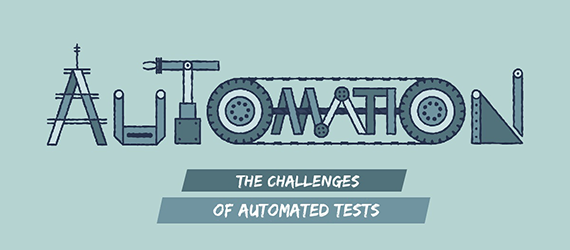In a previous article on our blog we explained the difference between manual tests and automated tests. Here we are interested in automated tests, particularly their advantages and strengths.
What is an automated test?
Unlike the manual test, the automated test runs without the intervention of a human. This method requires the use of computer solutions to perform the predetermined actions in a script and analyze the product on specific paths.
Why choose automated testing?
The purpose of automated testing is to simplify testing efforts as much as possible with scripts. The test is then performed according to this, the results are reported and compared with the results of the previous tests.
Its main interest lies in the fact that it saves time and money. In terms of budget, it makes savings on charges possible because the human is less needed, other than to carry out the maintenance of the test.
In terms of time, the repetitive nature of the automated test makes it possible to test the applications continuously but also to test better and more often. This is particularly the case for non-regression tests. This promotes faster start-up and reduced delivery times. Also, the automated test allows flexibility over time: tests can be performed outside working hours.
Finally, test campaigns can be traced through the automation of tests because the PLCs preserve the history of the tests' execution. This allows team leaders to reliably monitor the quality of test execution.
The automated test: the points not to be neglected
Despite the fact that automated testing has many advantages for companies, their implementation must be prepared and carefully considered in order to avoid possible failure.
The savings of time and money they promise can only be made over time. Indeed, the implementation of automated tests requires a significant investment compared to manual tests, especially in terms of time (execution, registration, variability and creation of procedures are time-consuming).
Moreover, the implementation of this test method requires not only research, but also hardware, software and people with ideas in development.
All test cases can not be automated, or are difficult to automate. It is important to think upstream about what is going to and can be automated and to work hand in hand with development teams to facilitate the integration of automated tests by seeing if they can be automated. There is less interest in testing a test case that is unlikely to happen. In order to decide whether a test case can be automated or not, several questions must be asked:
- the graphical interface of the functionality is stable: the application must be stable in order to support the automated test.
- is the scenario difficult to reproduce?
- is the manual test performing well?
- is the test campaign scenario repetitive?
The automated test requires an upgrade of the testers' skills. They will need to be trained to adapt their skills. They will first need to have programming knowledge so that they can use the automation tool optimally and thus better solve problems related to the testing of the application.
Another point to keep in mind is the company itself. Indeed, changes in terms of organization and corporate culture are to be expected. Such a change is not insignificant, and can lead to resistance from employees.
To conclude, artificial intelligence will never replace human intelligence. Automated tests must go hand in hand with manual tests, which must be carried out at certain levels (tests of user-friendliness) in order to test the product with complex use under real conditions. Consequently, this will significantly reduce the bugs and thus deliver a better quality application with greater customer satisfaction.
Want to go further?
Discover our white paper "Why and How to test in the digital age"







